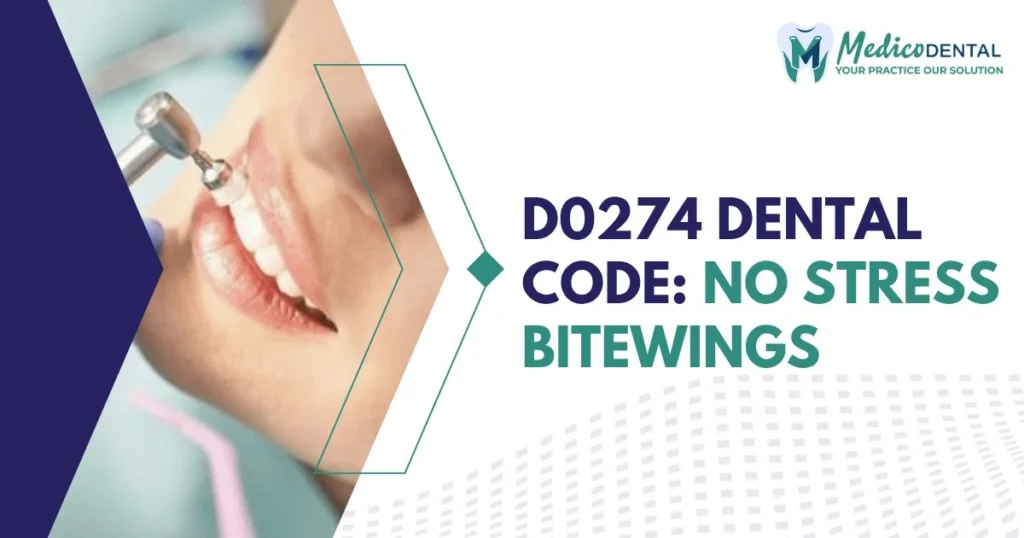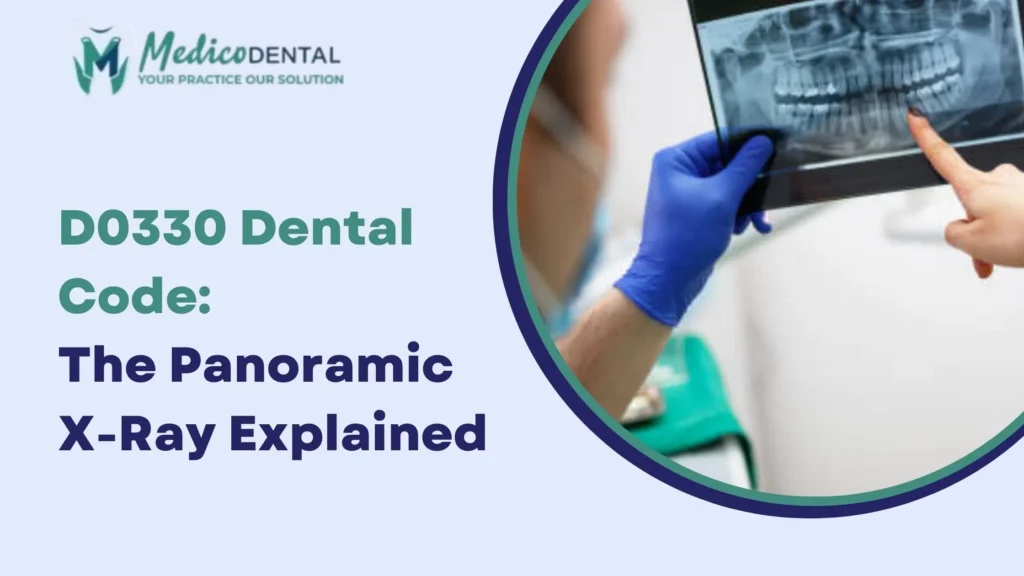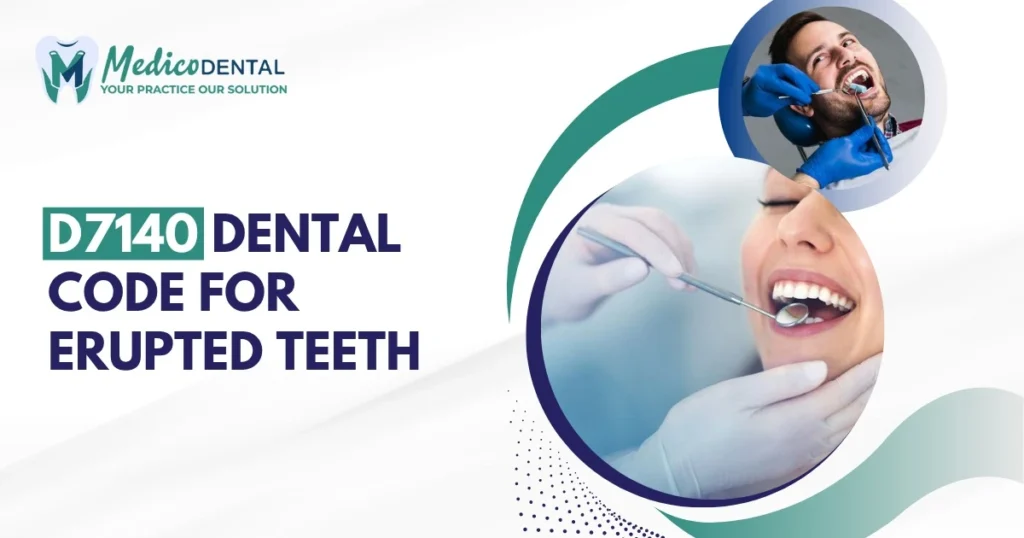The D0274 dental code refers to a dental procedure code used for four bitewing radiographic images. This code is commonly applied when a set of bitewing X rays is required to assess the condition of a patient’s teeth and gums. Bitewing X rays are essential in detecting cavities, monitoring bone levels, and identifying any signs of periodontal disease. This article will provide a comprehensive overview of the D0274 code, its purpose, procedure, billing, and insurance considerations.
What is the D0274 Dental Code?
Definition and Explanation of D0274
The D0274 code is a part of the Current Dental Terminology (CDT) codes established by the American Dental Association (ADA). It specifically refers to the process of taking four bitewing X rays. These radiographs focus on capturing the upper and lower back teeth (premolars and molars) to examine areas that are difficult to see during a regular dental exam. Bitewing X rays are often used in routine dental check ups to identify cavities between the teeth and assess gum health.
These four images typically cover both sides of the mouth, helping dentists make informed decisions about your oral health. By analyzing the bitewing X rays, a dentist can detect issues early on, which could prevent more extensive treatment down the road.
Purpose of D0274 Dental Code
Why is the D0274 Code Used in Dental Procedures?
The D0274 dental code is primarily used to bill for a full set of four bitewing X rays, which are crucial for monitoring a patient’s dental health. These X rays allow the dentist to:
- Detect cavities: By highlighting areas between teeth that are prone to cavities, bitewing X-rays help in early detection, reducing the need for costly and painful treatments later.
- Monitor gum health: Bitewing X-rays provide insights into the bone levels around the teeth and the health of the gums, making it easier to monitor the progression of gum disease.
- Assess bone levels: Dentists can examine how well the bone supports the teeth, crucial for diagnosing periodontal disease or assessing the damage caused by such conditions. This is vital for planning further treatments, which might even include procedures related to a Bone Graft Dental Code if significant bone loss is detected.
What Does the D0274 Code Help Detect?
The D0274 X rays are most commonly used for:
- Cavity detection: Cavities between teeth are often not visible during a regular exam, and bitewing X rays are essential for spotting them before they worsen.
- Periodontal issues: The X rays can detect early signs of gum disease by showing changes in the bone structure around teeth.
- Bone loss: X rays provide a clear view of the bone level and can reveal any signs of bone loss, which is important in diagnosing conditions like periodontitis.
The Procedure for D0274: Bitewing X rays
Step by Step Guide to the D0274 Procedure
Preparation: The patient will be seated in a dental chair. A small film or digital sensor is placed in the mouth to capture the X ray images.
Positioning: The patient will be asked to bite down gently on the X ray film or sensor while the dentist or hygienist adjusts the position of the X ray machine.
X ray Capture: The dentist will take the first set of images for one side of the mouth and then move to the other side to capture additional images.
Review: The images will be developed (if using traditional film) or viewed on a screen (if using digital X rays). The dentist will review the images for any potential issues like cavities or signs of gum disease.
How is the D0274 Procedure Performed?
The D0274 procedure typically involves four bitewing X rays, which are usually performed during routine dental exams or when the dentist suspects specific issues, such as cavities or gum disease. Unlike panoramic X rays that capture the entire mouth, the D0274 procedure focuses specifically on the back teeth.
The X rays are taken in a way that provides a clear view of the upper and lower back teeth, both of which are prime areas for cavities and gum issues. The patient’s mouth may be required to open slightly for each image, ensuring that the X ray captures the necessary details. The process is fast and usually requires some minutes.
Billing and Insurance Considerations for D0274 Dental Code
How is D0274 Billed?
When your dentist takes four bitewing X rays, the D0274 dental code is used for billing purposes. This is often done as part of a routine dental exam or a preventive care appointment. The D0274 code covers the full set of four X rays, and it can be billed separately or as part of an exam, depending on the circumstances.
If the bitewing X rays are performed in conjunction with a routine exam, they may be billed together as one service. If they are needed for specific concerns such as detecting cavities or monitoring bone loss the D0274 code will be billed separately.
Understanding Insurance Coverage for D0274
Most dental insurance plans cover bitewing X rays, as they are considered a preventive measure that helps in identifying dental issues early on. However, the coverage frequency may vary depending on the plan. For example, some insurance providers cover bitewing X rays once every 12 to 24 months, while others may cover them more frequently, especially if there is an indication of dental issues.
It is essential to check with your insurance provider to determine whether the D0274 dental code is covered under your plan, and how often it can be billed. Coverage can also be contingent on the dentist’s participation in your network, which is confirmed through a process known as dental credentialing. Some plans may cover the procedure fully, while others may require a co-payment. Additionally, certain additional X-rays beyond the four covered by D0274 may require different billing codes or may not be covered under the policy.
D0274 vs Other Bitewing X ray Codes
Differences Between D0274, D0270, and D0272 Codes
The D0274 dental code specifically refers to the use of four bitewing X rays. However, there are other related codes, including D0270 and D0272, which are used for different numbers of bitewing X rays. Understanding these codes and when each is appropriate can help both dental professionals and patients navigate billing, insurance coverage, and the clinical needs of each case.
D0270
This code refers to a single bitewing X ray. It is typically used when only one image of the teeth is required to assess a specific area, often when the dentist is focused on a localized problem, such as a cavity between two teeth. It provides a limited view and is often used when a more detailed, multi image set isn’t necessary.
D0272
This code refers to two bitewing X rays, often used to capture both sides of the mouth, particularly the premolars and molars. This is a common option for routine exams or when the dentist needs a broader view than a single X ray can offer, but a full set of four isn’t needed.
D0274
The D0274 code covers four bitewing X rays, which are taken for a more comprehensive look at the upper and lower back teeth (premolars and molars). This code is used in situations where a full set of bitewing X rays is needed for routine exams, detecting cavities, or monitoring bone and gum health across all the back teeth.
When to Use D0274 vs Other Bitewing Codes
D0270
should be used if only a single X ray is required, such as for a quick check up on one tooth or a specific area of concern. It is typically used when there are localized issues, such as detecting a cavity between two teeth on the same side of the mouth.
D0272
is appropriate when two X rays are sufficient to examine both sides of the back teeth (upper and lower). It is commonly used for routine dental exams or for monitoring existing dental work like fillings or crowns.
D0274
on the other hand, is used when four X rays are necessary to provide a comprehensive view of the entire set of back teeth. This is the most common choice for comprehensive evaluations, especially when a dentist needs to assess all the back teeth for cavities, bone loss, or gum issues.
In summary, the choice of code depends on the number of X rays needed for the procedure and the clinical situation. A single X ray may suffice in some cases (D0270), while others require two (D0272) or four (D0274) to obtain the necessary diagnostic information.
Vertical Bitewing X rays and D0274
Explanation of Vertical Bitewings in D0274
In addition to the traditional horizontal bitewing X rays, some situations may require vertical bitewing X rays, especially if the dentist needs a more detailed view of the bone levels and gum tissue around the teeth.
- Vertical bitewings are taken at a steeper angle compared to regular horizontal bitewings. This angle allows for a better view of the tooth structure and surrounding tissues, which is particularly helpful for patients with advanced gum disease or significant bone loss. It also provides a more detailed image of the upper and lower back teeth, especially in areas where the bone might be thinner.
- These X rays are typically used in periodontal assessments or for patients who need a closer look at bone levels, as they provide a better view of the vertical aspect of the teeth and surrounding bone.
How D0274 Covers Vertical Bitewing X rays
The D0274 dental code can also be used to cover vertical bitewing X rays when required. This is important because vertical bitewings provide a different perspective compared to the standard horizontal bitewings, and they can be crucial in diagnosing periodontal disease, monitoring bone loss, or assessing the health of the gums.
- When vertical bitewings are taken, the dentist may use the D0274 code instead of D0270 or D0272, depending on the number of X rays taken. For example, if four vertical X rays are needed to assess both sides of the mouth, the D0274 code applies. This provides a broader view of the teeth, particularly when detailed assessment of bone structure is required.
Thus, D0274 can cover both horizontal and vertical bitewing X rays, depending on the clinical needs and the dentist’s assessment.
How Often Can D0274 X rays Be Taken?
The frequency of D0274 X rays depends on several factors, including the patient’s age, dental health, and history of dental problems.
Routine exams may include bitewing X rays every 12 to 24 months, depending on the patient’s risk for cavities and other dental conditions. For example, children may need X rays more frequently due to their growing teeth, while adults may only need them every couple of years.
If a patient is at high risk for cavities or gum disease, more frequent X rays may be necessary to monitor the condition of their teeth and gums.
It’s important to follow your dentist’s recommendations on X ray frequency to ensure optimal oral health while minimizing unnecessary exposure to radiation.
Conclusion
The D0274 dental code is a vital part of dental care, providing essential diagnostic information through four bitewing X rays. These X rays help dentists detect cavities, monitor bone and gum health, and identify signs of periodontal disease, allowing for early intervention and better long term care.
The D0274 code can be used for both horizontal and vertical bitewing X rays, depending on the patient’s needs.
It’s important to understand the differences between the D0274 code and other bitewing codes like D0270 and D0272, as the number of X rays required can vary based on the clinical situation.
Insurance coverage for D0274 may differ by plan, so it’s essential to verify with your provider how often these X rays are covered.
Overall, the D0274 code is an important tool in the dentist’s diagnostic arsenal, ensuring that your oral health is monitored and maintained at the highest standard.
FAQs
What does the D0274 code cover?
Ans. The D0274 code covers four bitewing X rays of the back teeth to check for cavities, gum health, and bone levels.
Are D0274 X rays safe?
Ans. Yes, bitewing X rays are safe, with minimal radiation exposure and precautions taken to reduce risks.
Is D0274 used for routine dental exams?
Ans. Yes, the D0274 code is commonly used during routine dental exams to assess the back teeth for potential issues.
How often can D0274 X rays be taken?
Ans. The frequency depends on the patient’s age and dental health but is typically every 12 to 24 months.
What is the difference between D0274, D0270, and D0272?
Ans. D0270 is for a single bitewing, D0272 for two bitewings, and D0274 for four bitewings, providing a more comprehensive view.



